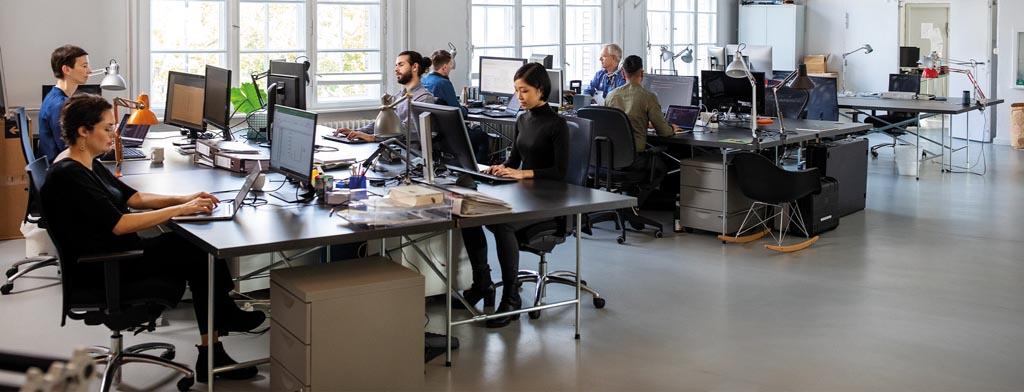CORPORATE
11 Jul 2023
What is Sound Masking and How Does it Work?

Subscribe to CX E-News
Sound masking technology has become increasingly popular in recent years as a way of improving privacy, productivity and comfort in various settings, from offices to hospitals to public spaces. But what is sound masking, and how does it work?
At its core, sound masking is the process of adding a low-level, unobtrusive background sound to an environment to mask or reduce the impact of other sounds that may be distracting or disturbing. This is accomplished with speakers strategically placed throughout a space, which emit a consistent sound at a level that is barely perceptible.
The generated signal used in sound masking is specifically engineered in the audio spectrum similar to air being pushed by a fan. This sound is carefully selected to be non-distracting and non- intrusive, so that it can effectively mask other sounds without itself becoming a distraction.
The science behind sound masking is based on the concept of the ‘Speech Privacy Index’ (SPI). The SPI is a measure of how well speech can be understood in any given environment and is influenced by factors such as the background noise level and distance between speakers and listeners. By adding a low-level background sound to a space, sound masking technology can help reduce the SPI, making speech intelligibility harder.

In addition to improving privacy, sound masking technology can also have other benefits. For example, by reducing the impact of distracting speech, sound masking can help improve focus and concentration, leading to increased productivity. It can also help create a more relaxed and comfortable environment, reducing stress levels and improving overall well-being.
Sound masking technology is typically used in a variety of settings, including offices, hospitals, schools, and public spaces (such as libraries and health centres). It can be tailored to the specific needs of each environment, with different levels used depending on the size and layout of the space.
Overall, sound masking technology is a powerful tool for improving the comfort, privacy, and productivity of various environments. Whether you’re working in a busy office or using services that require a good level of privacy, sound masking technology can help create a more pleasant and functional environment.

Five Benefits of Sound Masking for Productivity
In a busy office environment, distractions can be a major hindrance to productivity. From the sound of nearby conversations to the constant hum of equipment and machines, it can be hard to stay focused and get work done. However, sound masking technology offers a solution to this problem. Here are five benefits of sound masking for productivity in the workplace:
1. Reduces Distractions: By adding a low- level background sound to a space, sound masking technology can help reduce the impact of other noises that may be distracting or disturbing. This can make it easier for employees to concentrate on their work without being disturbed by the sounds of their colleagues or the surrounding environment.
2. Increases Privacy: In open-plan offices, privacy can be a major concern. Sound masking technology can help increase speech privacy by reducing the ability of others to overhear conversations. This can be especially important in industries where confidentiality is a priority, such as finance or healthcare.
3. Improves Focus: When there are fewer distractions in the environment, employees can focus more easily on their work. Sound masking technology can help create a more relaxed and comfortable environment, reducing stress levels and allowing employees to focus on their tasks at hand.
4. Boosts Productivity: By reducing distractions and improving focus, sound masking technology can ultimately lead to increased productivity. Employees can get more work done in less time, leading to greater efficiency and better outcomes for the business.
5. Enhances Comfort: Finally, sound masking technology can help create a more comfortable and pleasant environment for employees. The low-level background sound can help mask unpleasant or irritating sounds, leading to a more relaxed and enjoyable workspace.

How to Implement Sound Masking in Your Open-Plan Office
Open-plan offices have become increasingly popular in recent years, offering a more collaborative and flexible working environment. However, the open design can also create a noisy and distracting workplace, leading to reduced productivity and morale. Here are some tips and strategies for implementing sound masking in your open plan office:
Evaluate your space: Before implementing sound masking, evaluate your space to determine the specific needs and goals. Consider the size of the space, the types of activities that take place, and the specific noise issues you want to address.
Select the right system: Select a sound masking system that is designed to fit the specific needs of your space. Consider factors such as the type of sound used, the volume, and the placement of speakers. For example, if you have a lot of glass meeting rooms, you may need to select a system that can be adjusted to account for the reflective surfaces.
Placement of speakers: Consider the placement of speakers to ensure that the sound is distributed evenly throughout the space. Speakers should be positioned to provide optimal coverage while also minimizing the impact on nearby workstations or meeting rooms.
Optimal sound levels: Select optimal sound levels that are neither too loud nor too soft. Sound levels that are too high can be distracting and may create a feeling of discomfort, while sound levels that are too low may not provide the desired masking effect.
Test and adjust: After implementing the sound masking system, test and adjust the sound levels to ensure that they are providing the desired effect. Listen for any areas where the sound is too loud or too soft and adjust the volume as needed.
Implementing sound masking technology in your open plan office can provide a range of benefits, including reducing distractions and improving productivity. But you don’t have to do this on your own. We have certified consultants to help you with evaluating your space and selecting the right system to help you to create a more comfortable and productive working environment for your employees.

Are Sound Masking and Speech Privacy the Same Thing?
Sound masking and speech privacy are related but distinct concepts in the realm of acoustics.
Sound masking involves the use of low-level, ambient background noise to reduce the intelligibility of other sounds in a space, such as conversations or other distractions. The goal of sound masking is to make unwanted sounds less noticeable, rather than to eliminate them. This can improve privacy, comfort, and focus in a given environment.
Speech privacy, on the other hand, specifically refers to the ability to prevent conversations from being overheard or understood by others in the same space. This can be achieved through the use of sound masking or other techniques, such as acoustic barriers or sound-absorbing materials, that reduce the transmission of sound from one area to another. Speech privacy is particularly important in settings such as healthcare, legal, or financial offices, where sensitive or confidential information is often discussed.
While sound masking and speech privacy are related, they serve slightly different purposes. Sound masking is more of a general solution for reducing unwanted noise and improving acoustic comfort, while speech privacy is a more specific solution for protecting confidential conversations from being overheard. In some cases, both sound masking and speech privacy may be used together to create a more comprehensive solution for acoustically challenging spaces.

How To Create a Calm and Comfortable Office
In an office environment, sound masking and biophilic sounds can be used together to create a more effective acoustic environment.
Biophilic sounds are used to create a more pleasant and calming acoustic environment. They are natural sounds, such as the sound of water, birds, or leaves rustling, that can have a positive impact on well-being.
The concept of biophilic sounds is based on the theory of biophilia, which suggests that humans have an innate tendency to seek connections with nature and other forms of life. Studies have shown that exposure to natural sounds can have a calming effect on the mind and body, reducing stress and promoting relaxation to improve overall productivity and job satisfaction.
Sound masking, on the other hand, is used to reduce the impact of distracting noises in the environment by creating a more consistent background sound level. By using sound masking to reduce the impact of distracting noises, biophilic sounds can be introduced to provide a more pleasant and calming acoustic environment. The two approaches complement one other well, helping to create a more productive and comfortable workspace for employees.
In summary, biophilic sounds and sound masking serve different purposes, but complement each other well to create a more harmonious and productive workplace.
For more information, please visit: www.jands.com.au
Subscribe
Published monthly since 1991, our famous AV industry magazine is free for download or pay for print. Subscribers also receive CX News, our free weekly email with the latest industry news and jobs.




